Please tell me this is a Cherry Tree??
Hey everyone and specifically @creativetruth!! Remember my post 3 months odd back about me wanting to cultivate and grow a Cherry Bonsai? Well the time has arrived...
When we last spoke on this topic you advised me to grow something a little more Indigenous to the Country, great advice by the way (and so I did with my Boabab's featured below) but tried a little experiment with my newly acquired Cherry Tree seeds....
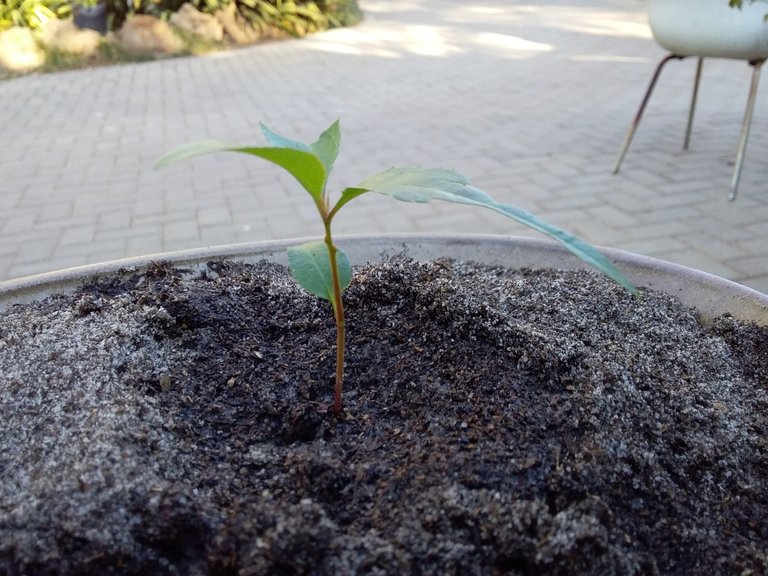
I planted around ten of them not expecting 'miracles' and for months, nothing happened, I watered and nurtured as much as I could daily, the days were getting shorter nights longer and weather colder...
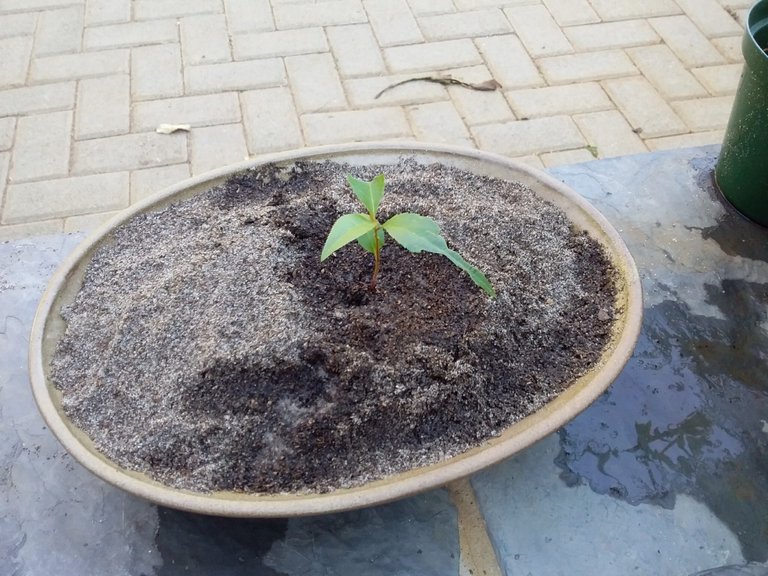
The Dilema: I am not 100% sure if this indeed one of my planted Cherry Tree seeds or not? We have tons of weeds in our compost this may just be a random weed that I have been nurturing for the last month how can I be sure?
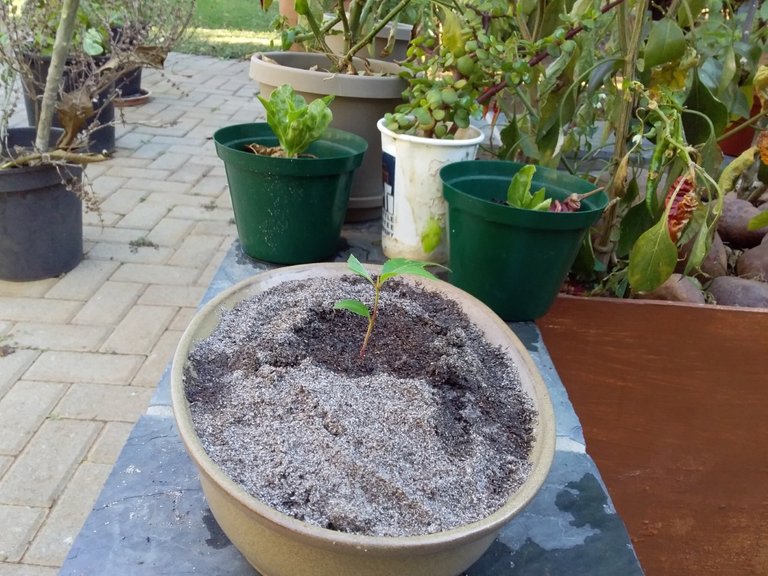
I did a Wikipedia search to try and get some clarity on the matter, these leaves are serrated and long and spindly and as far as I can remember the Cherry Tree on which I acquired these seeds were just that, however been so small one cannot really be too sure?

The 'said' wikipedia page: North America
See also: Cherry production in Michigan
In the United States, most sweet cherries are grown in Washington, California, Oregon, Wisconsin, and Michigan.[40] Important sweet cherry cultivars include Bing, Ulster, Rainier, Brooks, Tulare, King, and Sweetheart.[41] Both Oregon and Michigan provide light-colored 'Royal Ann' ('Napoleon'; alternately 'Queen Anne') cherries for the maraschino cherry process. Most sour (also called tart) cherries are grown in Michigan, followed by Utah, New York, and Washington.[40] Sour cherries include 'Nanking' and 'Evans'. Traverse City, Michigan is called the "Cherry Capital of the World",[42] hosting a National Cherry Festival and making the world's largest cherry pie. The specific region of northern Michigan known for tart cherry production is referred to as the "Traverse Bay" region.
Most cherry varieties have a chilling requirement of 800 or more hours, meaning that in order to break dormancy, blossom, and set fruit, the winter season needs to have at least 800 hours where the temperature is below 45 °F (7 °C). “Low chill” varieties requiring 300 hours or less are Minnie Royal and Royal Lee, requiring cross-pollinization, whereas the cultivar, Royal Crimson, is self-fertile.[43] These varieties extend the range of cultivation of cherries to the mild winter areas of southern US. This is a boon to California producers of sweet cherries, as California is the second largest producer of sweet cherries in the US.[44]
Native and non-native sweet cherries grow well in Canada's provinces of Ontario and British Columbia where an annual cherry festival has been celebrated for seven consecutive decades in the Okanagan Valley town of Osoyoos.[45] In addition to the Okanagan, other British Columbia cherry growing regions are the Similkameen Valley and Kootenay Valley, all three regions together producing 5.5 million kg annually or 60% of total Canadian output.[46] Sweet cherry varieties in British Columbia include 'Rainier', 'Van', 'Chelan', 'Lapins', 'Sweetheart', 'Skeena', 'Staccato', 'Christalina' and 'Bing'. https://en.wikipedia.org/wiki/Cherry
I then googled a few pictures of the leaves and got this https://www.google.com/search?q=cherry+tree+leaves&sxsrf=ALeKk004hWwIKNRxrfmQf-VjhRSIBtqNdw:1590735368016&tbm=isch&source=iu&ictx=1&fir=9jQjuL1wzuKnHM%253A%252CD2Nkmmf7EYIcgM%252C_&vet=1&usg=AI4_-kTXMLdsYZaKP77CGSigJR24_BsDTQ&sa=X&ved=2ahUKEwj256qEv9jpAhW9VRUIHb6bCdsQ9QEwAXoECAsQMg#imgrc=9jQjuL1wzuKnHM:
On futher inspection this is almost certainly not the traditional red Cherry Tree as the leaves look much more rounded on those, however the black Cherry Tree??? We may be onto something?
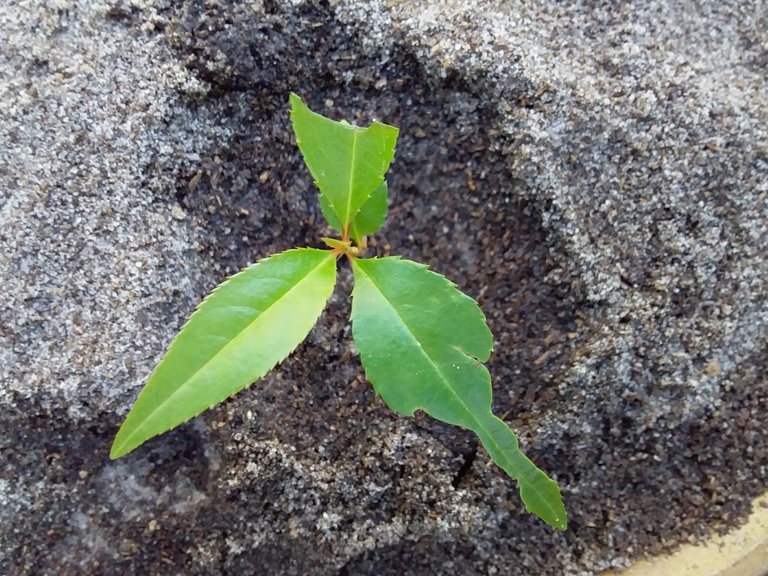
I put my newly cultivated Boabab Bonsai as well as Carolina Reaper plants indoors at night as to escape the frigid cold in South African Winter nights, as for the Cherry Tree it remains outdoors at night as it prefers the cold!
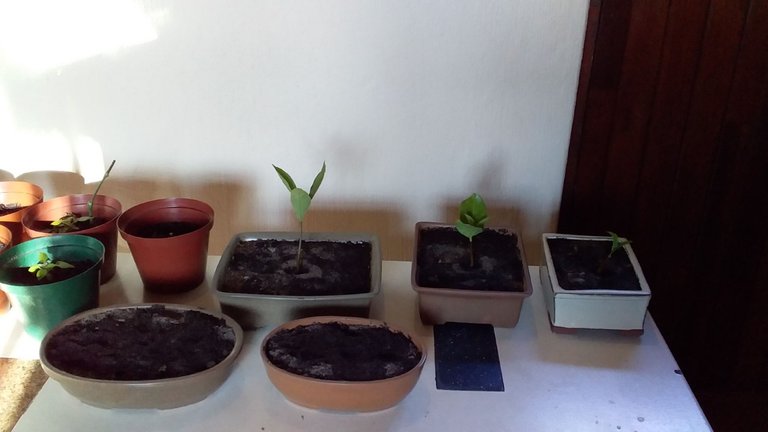
@creativetruth help me out here bud what do I have?
Nature the incredible!
Love and light, be blessed and have a magic weekend.
Cheer$;)
Thanks for the mention. I was getting ready for bed when I noticed you were asking me a question.
I think your best clue at the moment for identifying it is the spiral arrangement of the leaves. See how they climb around the trunk? From the top you see a triangle. Very unique! The serrated leaves are also a good clue, as you point out, yet many trees have this trait.
Yours doesn't seem to resemble the cherry cuttings I grew. Your leaves are too long and narrow. However, my cuttings were from mature tree wood, and so new leaves might look a lot different than those on a brand new seed tree. For instance, Ash trees grow a twin pair of long thin leaves from seed, like a carrot sprout, and then it develops true leaves that are wide and full.
Out of the tree seeds I planted in late Winter, only one of them sprouted, and I am also having trouble identifying it. Whatever I planted, it could be a weed or it could be exactly what I planted. Hopefully it is the Siberian Flowering Almond from the seed I planted. It looks a bit similar to your seedling, so I'll have to take a photo tomorrow to show.
My gut says you've got some kind of stone fruit, or nut tree. Many trees with serrated leaves fall into this plant classification, and different stone fruits can even be grafted onto each other.
Thanks brother for taking the time to compile such a comprehensive response, thing is I only planted Cherry Seeds so it is either Cherry or a weed? It does resemble a tree however? Be blessed, Cheer$;)
Never rule out that a bird or critter hid a surprise in there too.
You can always dig it out, and see if you can find the shell of the seed still attached to the root, and then you'll recognize it or not. It looks just about strong enough it could survive a transplant. Are you in the start of winter? It is probably safe.
Good plan im just scared I damage the roots. I transplanted from plastic pot to bonsai pot and soil so will just nurture it and see what it produces I guess, at least its not a weed, thanks for the help bruv, be blessed. Cheer$;)
Congratulations @craigcryptoking! You have completed the following achievement on the Hive blockchain and have been rewarded with new badge(s) :
You can view your badges on your board And compare to others on the Ranking
If you no longer want to receive notifications, reply to this comment with the word
STOPDo not miss the last post from @hivebuzz:
Hey thanks a mil much appreciated. Cheer$;)
You are very welcome @craigcryptoking ❤️
cheers, liz
By the way, if your new seedling isn't exploding in size in a month, you might want to enhance your soil with a layer of rich compost mulch on top, or replant the tree into a richer soil. Sand will make it easy for small roots to spread, but is not retaining any nutrients to fertilize the top of the tree to grow. You might be okay, but keep an eye on it so it continues at a steady pace.
Seed trees are often designed to grow underneath taller trees, and want the richness of lots of compost to develop a competitive root system. The first year, they don't need to be fried in full sunlight either, and will benefit from the shade of taller trees part of the day.
Appreciate the tip brother will do..